- Home
- Patrick Robinson
The Shark Mutiny (2001) Page 38
The Shark Mutiny (2001) Read online
Page 38
“The way he was speaking, they’re old buddies.”
“Yeah,” said Rick. “In his dreams.”
“Well, do you think this has sinister connotations for us, and the people who work under his command?”
“Normally, I’d say, maybe not. A lot of people are spiritualists, trying to get in touch with people ‘on the other side.’ Doesn’t make ’em necessarily crazy. And certainly not dangerous. I mean, there’re institutes of learning for spiritualists all over the place. A lot of very clever people think there can be communication between the living and the dead. And who the hell are we to say there’s not?”
“I know. But it’s not just any old dead we’re dealing with right here. We’re dealing with a couple of guys who have suffered traumatic catastrophe. And my immediate boss, who is about to be charged with the execution of one of the most dangerous Special Forces insert-and-rescue missions ever mounted, thinks he’s one of them, and wants to have a chat with the other.
“It’s as if your bank manager thinks he jumped out of a high-rise window eighty years ago, in the crash of twenty-nine. And now he’s desperate to get in touch with another suicidal bankrupt bank president before he invests all your money.”
“Well, Danny, you always did have a way with words. But this time I don’t like ’em much. But hell, what can we do? We can’t just lay it on him. He’d have us both court-martialed for causing riot and unrest in the ship.”
“I’d sure as hell rather that than have him court-martialed for causing everyone’s death in the face of the enemy.”
“I know. And you think this problem he has manifests itself when there’s some form of pressure being exerted on him?”
“No doubt in my mind. I’ve seen it twice.” And now Lt. Commander Headley spoke very slowly, very deliberately. “This, Ricky, is a guy I guarantee will fold up completely, if something goes wrong, or if we had to throw the rule book overboard and play a very bad situation by ear—you know, if we really had to wing it. Which is always possible in missions like this one coming up.”
Those had been, virtually, the last words the two men had spoken on the distressing subject, because there really was nothing more for them to say. And they were both trained to say nothing about Naval operations unless it was absolutelty necessary. They finished their dinner in near silence.
That entire private investigation of the CO by the XO and the SEAL boss had taken place two nights previously, on Monday, June 4. And since then they had both tried to cast it to the back of their minds.
And now it was Wednesday, June 6, and the guys were going in, that night, in less than two hours. USS Shark came nosing up to her rendezvous point, with her cargo of SEALs making final preparations for the launch of the ASDV.
Commander Hunter had everyone ready. They were sitting in shorts and T-shirts only, but their faces were blackened with waterproof combat cream. The atmosphere was tight, as they checked over their wet suits and flippers, personal weapons and underwater breathing equipment. And they all listened to the monologue of Lt. Dallas MacPherson, as he checked the explosives list against the hardware.
He seemed to be wisecracking his way through it, as always. “One velly big bang right here, blow off many Chinese borrocks.” But Dallas wasn’t joking. He was coping—coping with the pressure the best way he could, steadying his nerves, fighting down the icy fear they all felt as they prepared to board the ASDV.
Every now and then, one of the younger SEALs reached out and just touched the shoulder of the man next to him, maybe ruffled his hair, punched him lightly on the arm.
It was a technique Commander Hunter had taught them—Don’t go quiet. Don’t let it wash over you, or you’ll get overwhelmed before you start. Stay in close communication with each other. Remember: In this outfit, we don’t SEND anyone anywhere. We all go together.
11
061830JUN07. USS Shark. Bay of Bengal.
16.00N 94.01E. Speed 2. Racetrack pattern. PD.
This was Commander Rick Hunter’s final briefing of his team. They had already gone over and over the details, infinitesimally, back and forth, every measurement, every millisecond of time, every piece of equipment, how much it weighed, where it would be stored in the ASDV, who would carry it in. They knew the point where they would breach the outer fence. It was too high to climb with the stuff. They would have to cut it.
They knew the precise yardage along the fence to the guardhouse, the precise distance, to the inch, up to the power station. They knew the timing of the guard changes, the location of the lights. They knew there was the likelihood of a bright moon; they knew the terrain, its firmness, its chances of being muddy. They knew the doors they must go through. And they knew the precise location of the massive main shaft down to the geothermal core. They also knew there was a probability of having to kill to survive.
And now the SEAL team leader was painting with a much broader brush. Each man had a small Navy chart in front of him, and a small, detailed scale map of the Chinese Naval complex. And each man was marking up both sheets, strictly as they applied to him, and the part he would play in the attack.
Each man had already completed his last will and testament, and a short letter home to either his wife or parents, in case he did not survive. All 12 of the wills were secured in one of the submarine’s safes.
Rick Hunter stood before his team, and he looked much the way they did, but bigger—face blackened, wearing his wet suit, and black running shoes. A larger-scale Navy chart of the area was pinned to a board behind him and he was pointing with a ruler at the critical points of the mission, talking the SEALs through the timing…“Okay, we leave here at seventeen hundred, proceeding to this point on your chart right off Thamihla island. That’s a distance of fifteen miles, and it’s going to take us two and a half hours. From there we expect to find the deep-water channel right here, and we head on up to this can with the flashing light, okay? We then move up here for four more miles to this buoy with the flasher, right at the start of the natural deep-water channel leading right into the base…we’ll see it easily. Now that’s all clear, right?”
The SEALs all nodded in the affirmative, and Rick carried on. “At this point right here, a half mile off the jetties, we exit the ASDV, Catfish, Mike, Buster and myself. We carry in four sticky limpets and place them on the underside of the hulls of the two Chinese warships that are moored alongside…there’s a six-thousand-ton Luhai-Class destroyer right here in the photograph.
“It’s five hundred feet long and fifty-four feet wide, twin shafts and a lot of guided missiles, and torpedoes. Right next to it is a much smaller ship, a two-thousand-ton Jangwei II frigate, only three hundred sixty feet long. But it’s fast and it carries a lot of antisubmarine mortars. Gentlemen, I assure you it’s in our best interests to get rid of it very thoroughly. Both these ships carry helicopters, and it would be nice to somehow have them tip into the harbor.”
“Sir, I forgot to clarify. Are you guys getting back in the ASDV to go to our next stop? Or do we just meet up there?”
“No, we’re getting back in. The insert wants to be in a much more lonely place, and it’s too far back down the channel. We’re hitchin’ a ride.”
Commander Hunter then confirmed the landing site, a point less than one mile south of the jetties, behind a half-mile-long navigational hazard marked on the chart as Wolf Rock. “We’ll all get out right there, about five hundred yards offshore; one hundred fifty of those yards are marked as a marshy area with a lot of vegetation. We’ll walk through there, and when we hit the beach we’re gonna be only a half mile from the dockyard fence. It’s gonna be dark, desolate and without military guards. The first place we meet people will be the guardhouse, and there’re only two people in it—one engineer and one Navy patrol guard. That’s all. You know what to do.”
From that point on, Commander Hunter talked quickly through the well-documented plan. Everyone knew it by heart. This was just a brief refresher before departure, one fina
l look at the campaign map. One final look, perhaps, into the face of death. They were frightened, as Special Forces must always be a little frightened. But no one flinched.
At 1855 the SEALs began to embark the ASDV, climbing up through Shark’s dry hatch, into the minisubmarine itself, which rested in one of the round, twin deck shelters up on the casing. Right now it was dry in there, and as each SEAL entered the tiny electric underwater craft, he checked the precise location of the gear he would personally carry in.
Lieutenant Dave Mills was already at the controls, seated next to his sonar operator/navigator, Lt. Matt Longo, upon whose brain would fall the task of locating the secret Chinese channel into the harbor. And one by one the SEALs moved into position, the five rookies from Coronado, then the veteran combat SEALs Catfish, Bobby, Rattlesnake, Buster, and Chief Petty Officer Mike Hook, followed by Lt. MacPherson who slipped expertly up through the gap, and took his place next to Bobby Allensworth.
Last of all came Commander Rick Hunter, who was talking to Dan Headley in the small area below the dry hatch.
“Guess this is it, ole buddy,” said the huge SEAL leader. “Don’t forget your promise. You’re gonna get us out of there no matter what.”
“We’ll get you out. The boats are coming in to RV Two one hour before you need them. They’ll be transmitting every thirty seconds as from zero-two-four-five. Two single beeps right on your frequency…Good luck, Ricky…it’s gonna be fine…but for Christ’s sake, be careful.”
They shook hands, formally, unsmiling; nodded curtly one to the other, and then parted. Lieutenant Commander Headley going back to the control room. The SEAL chief climbing up into the little submarine.
Immediately the hatches were closed tight and clipped. And Rick Hunter’s team all heard the sudden rush of water as the departure crew outside flooded down the shelter. They could hear the metallic thuds in the water beyond the hull as the ASDV came free of its steel lines. Six hefty frogmen began to heave it forward on its tracks, away from the mother ship. They waited for 10 minutes, riding free in the water, for the deck shelter to close, and for the outside crew to rejoin the Shark.
Then they saw Lt. Mills switch on the electric motor, and the ASDV swung right, onto its course one-two-zero, creeping now at its maximum speed of six knots toward the tiny Burmese island of Thamihla, and the deep-water channel they hoped to God they would find. Because if they did not find it, they knew they would have to postpone, until someone did find it, because these orders came from On High. Really High. And most of the SEALs preferred to get this thing done right now.
Inside the ASDV it was dry, but as they traveled it grew colder. There was no heat in this vehicle, but the SEALs were warm in their superbly insulated Navy wet suits. They could talk if they wished, but water magnifies all sound, and SEALs are trained to say nothing unnecessary on a combat mission. Thus there was hardly a word spoken for the first two hours. Not since Lt. MacPherson had mentioned, as they flooded down the shelter, that he usually charged a lot of money for his “world-famous imitation of a fucking goldfish.”
All journeys in an ASDV seem to take forever. They travel blind, instruments only, and the passengers can see nothing. The submarine is dark, except for the light cast from the orange-colored screens on the control panels, and that left each of these highly trained assault troops with nothing to do except think about their tasks on this night.
Sometimes it was possible to see a couple of particular friends, like Bobby and Mike Hook, catch each other’s eye, and perhaps smile. But it signified only that they were aware of the other’s thoughts, and the colossal dangers they were facing, and the possibility that one of them, or perhaps even both, might not make it back. SEALs only think such private thoughts. They never say them.
And so the little submarine pressed on forward, 40 feet below the surface all the way. After two hours and 15 minutes they slid up to PD, and Dave Mills sent up the mast. Seven seconds later they went back down to 25 feet, and Matt Longo said quietly, “We’re getting into the area, guys. I got us at fifteen fifty-one north and ninety-four fifteen east on GPS. Right now I’m searching for the channel.”
All the SEALs knew now precisely where they were. Hours of study had committed that chart indelibly to their memories. They were in only 36 feet of water, but they were headed for a shoal over which there were only 15 feet in some places, which would put them damn close either to the surface or on the bottom.
Everyone, involuntarily, held their breath as Lt. Mills eased the ASDV along the southern edge of the shoal. They could hear the tiny click of the sounder, testing the seabed.
Lieutenant Longo’s monologue never stopped…. “We got twelve feet below the keel…make that ten…steady at ten…looks like we got it first time. We need a course of zero-eight-zero.”
Lieutenant Mills: “Zero-eight-zero it is.”
Longo: “Sir, this must be the channel. Suggest we speed up a touch…sounding still steady at ten.”
Five minutes and 300 yards later the ASDV was in 50 feet of water, right in the trench northwest of Thamihla. The Chinese had dredged precisely where the engineers in Coronado had said they would. And Dave Mills again brought the ASDV to periscope depth. Right in front of him the mast slid upward, and he peered through the viewfinder, ranging right, from dead ahead to zero-four-zero. There it was, about a mile off their starboard bow, the light flashing every two seconds on the red can they had imagined so often on the chart.
Slight course change at 15.53N 94.16E on the GPS…come to zero-four-zero through the dredged channel…but we’re in patrolled waters…advise visual every three minutes.
“That Longo. Clever little prick, right?” Lieutenant MacPherson whispered it just loudly enough for the Navigator not to hear.
“Shut up, Dallas,” hissed Rick Hunter. “I’d like to see you doing what he’s doing.”
“Me? Sir, you must be joking. How many times do I need to tell you? I can do it all.”
“As a navigator you’d probably hit it all.”
There was a lot of stifled laughter, which defused some of the tension but not all of it. And the ASDV crept forward through the dark narrow channel, its only “eyes” an occasional look through the periscope. It took them another 40 minutes to move all the way to the north end of the dredged channel, and right at the entrance to the natural deep water they spotted a patrol boat through the periscope.
And it was coming straight toward them, the unmistakable Hainan Type 037 fast-attack patrol boat, heavily gunned, with a phalanx of ASW mortars. This ship is the coastal warhorse of the Chinese Navy. They have a hundred of them, divided among their three fleets. Lieutenant Longo spotted it way up ahead, with its distinctive low freeboard, making 30 knots through the water, with a big white wake astern, almost as if it had nothing to do with the Chinese Naval dockyard off to the west.
Lieutenant Mills whipped down the periscope and took the ASDV as deep as she would go, cutting her speed, and steering left toward the edge of the Haing Gyi Shoal, trying to put a mile of the Bassein Delta between the U.S. SEALs and the oncoming Chinese patrol.
She was not transmitting, but Lt. Mills was taking no chances. He cut the engines and allowed the submarine to drift down and settle on the sandy bottom. And everyone heard the Hainan go charging past.
“You know what I think?” whispered Matt Longo. “I think she was Burmese, coming straight down the estuary from their Naval base up at the city of Bassein, several miles upstream from here. She looked too settled on her course, and she was going too fast, to have just exited the dockyard. And she sure as hell didn’t look like a patrol boat snooping around the deep waters beyond the Chinese jetties. She was in a real hurry.”
Lieutenant Mills started the engine and engaged the shaft. The ASDV moved immediately forward, bumping off the soft bottom, heading northeast again. Another three miles, and they’d be right off the jetties. Thirty minutes from right now, the SEALs’ four hit men would be on their way.
They
moved on slowly, transmitting on the fathometer occasionally. At 2250 Lt. Mills slid quietly up to PD for a visual, and there, 500 yards off their port beam, he could see the lights along the jetties. He could also see the shape of one small frigate moored dead astern of a large destroyer.
“Okay, guys,” whispered Longo, “we’re a bit too close. Get out right here. We’re still in the fifty-foot channel. Targets are five hundred yards to our west. Steer course two-eight-five and you’ll come in right against the hulls.”
Rick Hunter came forward to take a visual on the targets. And Lt. Mills decided they could exit on the surface, since there was not a single sound of any ship, radar or even a remote sonar. The dockyard was silent, unsuspecting, as everyone had expected. And of course the little ASDV is dead flat along its upper casing. There is no sail and it’s invisible from 500 yards in dark water, just a jet-black steel tube in the night.

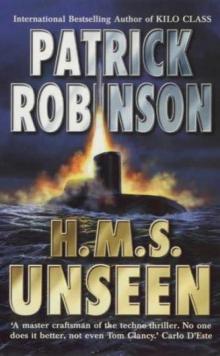 H.M.S. Unseen am-3
H.M.S. Unseen am-3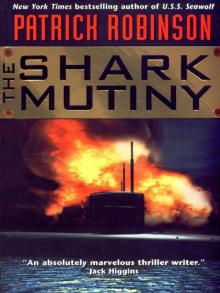 The Shark Mutiny (2001)
The Shark Mutiny (2001)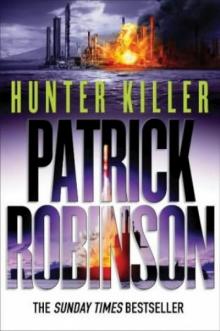 Hunter Killer am-8
Hunter Killer am-8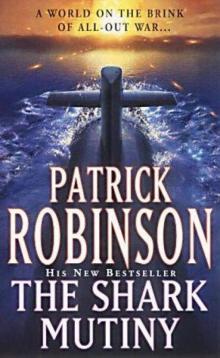 The Shark Mutiny am-5
The Shark Mutiny am-5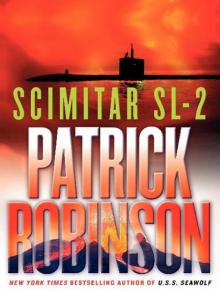 Scimitar SL-2
Scimitar SL-2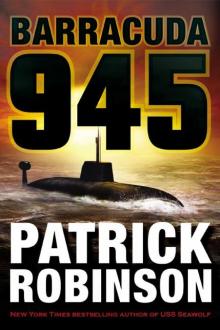 Barracuda 945 am-6
Barracuda 945 am-6 Hunter Killer
Hunter Killer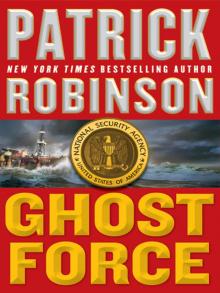 Ghost Force
Ghost Force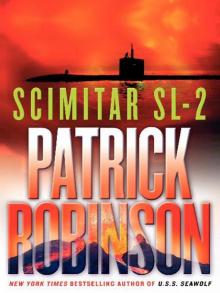 Scimitar SL-2 (2004)
Scimitar SL-2 (2004) Kilo Class am-2
Kilo Class am-2 The Lion of Sabray
The Lion of Sabray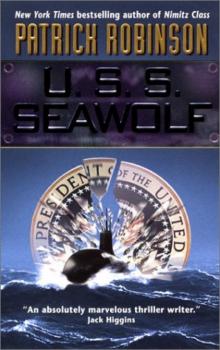 U.S.S. Seawolf am-4
U.S.S. Seawolf am-4 Ghost Force am-9
Ghost Force am-9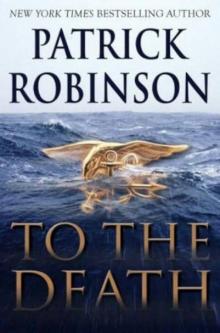 To the Death am-10
To the Death am-10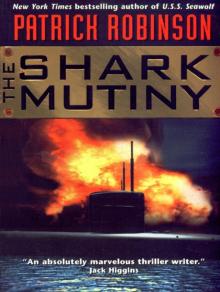 The Shark Mutiny
The Shark Mutiny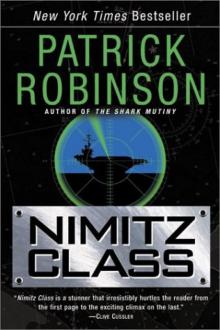 Nimitz Class am-1
Nimitz Class am-1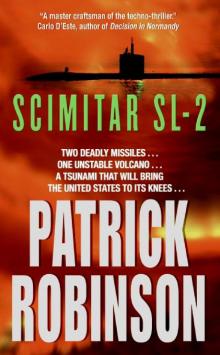 Scimitar SL-2 am-7
Scimitar SL-2 am-7 Barracuda 945
Barracuda 945 Intercept
Intercept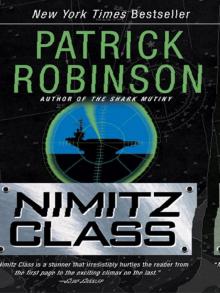 Nimitz Class (1997)
Nimitz Class (1997)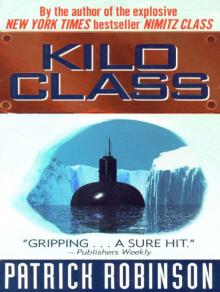 Kilo Class
Kilo Class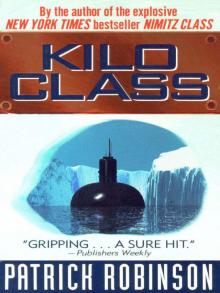 Kilo Class (1998)
Kilo Class (1998) Diamondhead
Diamondhead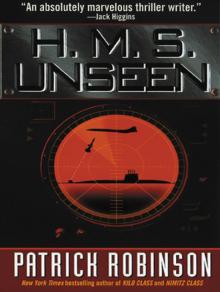 H.M.S. Unseen
H.M.S. Unseen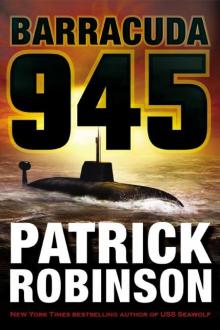 Barracuda 945 (2003)
Barracuda 945 (2003)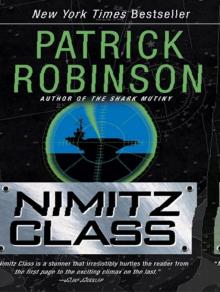 Nimitz Class
Nimitz Class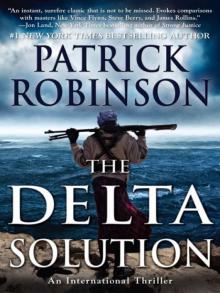 The Delta Solution
The Delta Solution U.S.S. Seawolf
U.S.S. Seawolf